Stay in touch
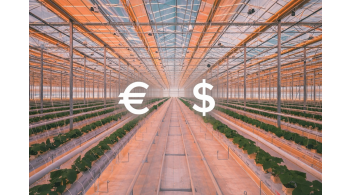
Where to Get Funding for Greenhouse Equipment? Available Financial Programs in Ukraine for Greenhouse Modernization in 2026
Modern greenhouse farming requires significant investments: energy-efficient heating systems, lighting, upgraded structures, automation, and new cultivation technologies. However, for many farmers and entrepreneurs, the key question remains: where to find financing?
Despite economic challenges, Ukraine offers a range of active programs that provide grants, loans, compensation, and support from international organizations. Below is a structured overview of the most useful tools to consider for greenhouse modernization in 2025–2026 (note: many programs are ongoing or planned for renewal in 2026).
1. State Grants for Greenhouse Development (up to 7–10 million UAH)
The government program under "єРобота" (Cabinet of Ministers Resolution, with updates) provides non-repayable grants for creating or modernizing greenhouse complexes.
The grant can cover:
- Construction of new greenhouses,
- Purchase of equipment,
- Modernization of existing facilities.
The program was active in 2025, with funding allocated (e.g., over 167 million UAH disbursed), and is planned for resumption/continuation in 2026, with budget provisions for greenhouse and orchard grants. Coverage up to 70% of project costs, typically capped at 7–10 million UAH depending on scale.
To participate, prepare high-quality documents:
- Technical-economic justification (TEJ),
- Cost estimate,
- Design documentation,
- Business plan.
Applications are submitted via the Diia portal. Demand is high, so professionally prepared and economically sound projects have the best chances.
2. Affordable Loans at 5–7–9%
The state program "Affordable Loans 5-7-9%" operates through Ukrainian banks and is suitable for financing greenhouse businesses (active in 2025 and continuing into 2026).
Funds can be used to purchase:
- Energy-efficient heating systems,
- LED lighting,
- Automated climate control systems,
- Equipment for reconstruction or greenhouse upgrades.
Interest rates depend on:
- Business size,
- Activity type,
- Availability of collateral and guarantees.
The program's advantages include relatively quick processing and flexible terms. In 2025, significant volumes were issued, with expansion ongoing.
3. Energy Efficiency Programs from Local Communities (OTG)
Some communities have their own programs supporting energy-efficient solutions.
Compensation can cover part of the costs for:
- Installation of heat pumps,
- Insulation of premises,
- Replacement of lighting with LED,
- Heat recovery systems.
These programs are not available everywhere, but where they exist, farmers receive real financial aid. Always check opportunities with your local council.
4. Partial Compensation for Ukrainian Agricultural Equipment Costs (up to 25%)
If a greenhouse operation purchases equipment manufactured in Ukraine, the state compensates up to 25% of its cost (program active in 2025 and continuing in 2026).
Eligible items include:
- Irrigation and filtration systems,
- Racks and tables for cultivation,
- Automation and climate control,
- Heating systems,
- Certain types of greenhouse structures.
This is one of the simplest ways to get partial support without complex applications. The list of eligible equipment is regularly updated (expanded multiple times in 2025).
5. European and International Programs Supporting the Agricultural Sector
For businesses working with the EU or planning exports, additional opportunities are available.
EU4Business (EU)
Support for small and medium enterprises, including grants for modernization and development (active grants for recovery and competitiveness in 2025–2026).
EBRD Programs
- Advisory grants,
- Technical support,
- Co-financing of modernization projects (ongoing financing for agribusiness resilience in 2025–2026).
USAID Projects
Particularly active in areas such as:
- Agrotechnologies,
- Energy efficiency,
- Enhancing agribusiness competitiveness (programs like AGRO and AGRI-Ukraine continue support in 2025, with focus on recovery).
International programs often provide not only funding but also expert assistance, training, audits, and analytical resources. It is recommended to monitor current calls on the websites of EU4Business, EBRD, and USAID.
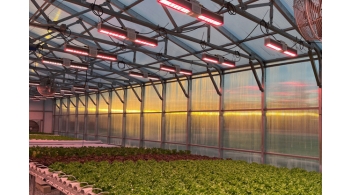
5 proven energy saving methods for a greenhouse
Winter means sharp temperature drops, short daylight hours, severe frosts and increased heating costs. Proper preparation of the greenhouse allows you to maintain stable plant growth and optimize costs even in the most difficult months. Here are 5 recommendations that will help you grow effectively in winter:
1. Using anti-condensation screens to reduce heat loss
One of the most effective ways to reduce winter energy costs is to install an anti-condensation film, which allows you to save up to 35% of heat. This solution has been used by European manufacturers for many years - as a second or even third internal screen in the greenhouse. Suitable for both glass and film high greenhouses.
In winter, the anti-condensation film acts as an additional barrier that: retains heat in the greenhouse, prevents heat loss through the roof, provides a more stable microclimate for new crops, and helps save energy.
It is anti-condensation films that retain condensate in the upper layer, preventing drops from falling down - unlike conventional films that do not have this property. This significantly reduces the risks of moisture, fungal infections and plant damage.
2. High-quality insulation is the basis for stable operation of a greenhouse in winter
The better the greenhouse is insulated, the less money is spent on heating. Modern projects necessarily use:
- energy-saving curtains,
- double film coating or the use of polycarbonate in the side walls,
- insulation of the foundation part,
- minimization of thermal bridges in the structure.
Thermal curtains are the most effective built-in tool: they close at night and reduce heat loss through the roof, reduce condensation and the risk of fungus, and most importantly - significantly reduce energy costs.
3. Energy-efficient heating solutions
Heating is the main expense item in winter. The following systems work better in Ukraine:
The most effective options:
- Solid fuel boilers (pellets, wood chips). The most affordable and popular type of heating in Ukraine. A good solution for medium and large greenhouses.
- Biomass systems. In regions with cheap raw materials - profitable.
- Air-to-air / air-to-water heat pumps. Work effectively at temperatures down to -10°C, then require an additional heat source.
- Infrared heating. Optimal for small greenhouses or local heating of areas.
And more expensive systems:
- Geothermal heating. High efficiency, but requires significant capital investment, so it is rarely used in commercial greenhouses in Ukraine.
4. Lighting system: critically important in winter
Ukrainian winter has low insolation, so additional lighting becomes mandatory if you plan to harvest in winter.
Recommendations:
Use LED lamps instead of DNaT - save up to 40-60% of electricity.
When choosing lamps, keep in mind that the main thing is a sufficient amount of light, and spectrum optimization is already the second stage.
5. Automation is the key to stability
Automation in greenhouses allows you to:
- avoid sudden temperature changes,
- optimize energy use,
- precisely control humidity and ventilation,
- reduce the risks of human errors,
- increase yield and product quality.
Modern control controllers (Ridder, Priva, Hortimax, etc.) have been working in greenhouses for a long time, but due to lack of financial resources, you can at least install ordinary timers.
Do you have any questions? Contact us, we'll be in touch!

The largest blueberry in the world
The world's largest blueberry was grown in Australia, and it was officially entered into the Guinness Book of Records.
It weighed 20.4 grams, almost the size of a tangerine, and was 39.3 mm in diameter. This is not just a random berry - it is from the Eterna variety, which was developed by the Costa Group.
This blueberry was picked on a berry farm in Corinda, Australia.
As the agronomists themselves say:
"We are not chasing size. For us, the main thing is quality, taste and adaptability. And this berry is really tasty, crunchy, with a long shelf life." I don't know if this is true or if it is modesty))
But for us it is not just about a large berry, but about potential and an example of how selection should work: with an understanding of climate, market and taste.
I believe that in Ukraine we will be able to do something similar - to develop berry growing not only as a seasonal story, but as an innovative agro-technological industry, with its own unique varieties. All we need is consistency, strategy - and a little enthusiasm :)

Why Cucumbers Are Getting Longer: Scientists Explain
Modern greenhouse cucumbers are noticeably different from their wild "relatives." They are significantly longer, have a more attractive shape, and are better suited for packaging and sales. But why did this happen?
Scientists from the United Kingdom (John Innes Centre) and China (CAAS) have found the answer. They discovered that a seemingly minor genetic mutation plays a key role in the elongation of cucumbers.
This mutation doesn’t change the structure of the protein but affects how the gene is read. In wild varieties, this gene is active and “limits” the growth of the fruit. In cultivated varieties, the gene is suppressed — and that’s exactly what allows the fruits to grow much longer. According to the researchers, modern cucumbers can be up to 70% longer than their wild counterparts.
What does this mean for growers?
-
Breeders gain new tools to precisely influence the shape and size of the fruit.
-
Producers can create products with higher market value, as consumers appreciate attractive and convenient packaging.
-
This knowledge also allows for the optimization of logistics, packaging, and export.
The outlook for Ukraine
This study is a clear example of how precise scientific knowledge can open up new opportunities for the market.
Ukrainian greenhouse producers who apply modern breeding approaches have every chance to strengthen their position on the European market.
Source: research by CAAS and John Innes Centre, published in Cell magazine.

In the Netherlands, a massive 9-hectare greenhouse collapsed
In the Netherlands, a greenhouse with an area of 9 hectares recently collapsed. In the literal sense, a huge modern structure collapsed in a matter of seconds.
It was a greenhouse of Agro Care, the largest tomato producer in the Netherlands. Their greenhouses cover more than 500 hectares, and the company operates not only in the Netherlands, but also in France, Denmark, Brazil, and Tunisia. In other words, it is an international player with a great reputation.
But what is truly impressive is that all 65 employees left the greenhouse an hour before the collapse. No casualties. The company sincerely thanks fate for this - and it is difficult to disagree with this.
What happened?
At first, they talked about the instability of the structure, saying that during the installation of the second energy-saving screen, some of the elements were temporarily changed, which led to the collapse during a gust of wind. But later, an official investigation gave a clear answer: the cause was human error during repair work.
The technical explanation is quite specific: during the preparation for the installation of the energy-saving curtain, the cross ties, which are responsible for the lateral stability of the greenhouse, were dismantled. The trusses remained intact - but after removing the ties, the structure lost its balance. And it was from the side where they were missing that the wind picked up.
As the TNO expert notes, "the greenhouse was built according to all standards, the design is correct, and a collapse was impossible under standard operating conditions."
In other words, the error was not in the design, nor in the curtaining, but in the actions of people who decided that dismantling the ties was "not scary."
This case shows that any reconstruction, installation or change in a greenhouse is not just "screwing a bolt." This is an engineering responsibility.
Because even the best design is not immune to human negligence.
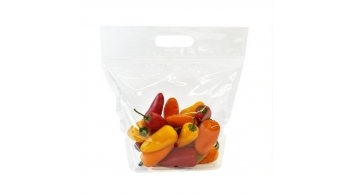
The Rise of Veggie Snacks in Europe: A Clear Opportunity for Smart Greenhouse Businesses
Healthy snacking is on the rise in Europe — and greenhouse-grown vegetables are playing a key role in that trend.
In fact, in 2024, sales of snack veggies like tomatoes, cucumbers, and peppers in Dutch supermarkets jumped by 16%.* Snack tomatoes continue to lead the category, making up nearly 80% of total snack vegetable sales.
Cucumbers and peppers in snack format are also seeing steady growth. This shows a clear opportunity for greenhouse producers to develop compact, ready-to-eat vegetable formats that are easy to package, sell, and export.
Here’s an interesting insight:
In 2024, Dutch consumers spent €4.4 billion on shelf-stable snacks and sweets — about 9% of all supermarket spending (€50.5 billion total). In contrast, veggie snacks accounted for less than 0.5%. That gap reveals huge untapped potential for healthier snacking options — and a big chance for modern greenhouse businesses to step in.
In the Netherlands alone, 63% of families bought cherry tomatoes in 2024 — a record high. These small tomatoes now represent a third of all tomato sales and nearly 40% of total sales value. People are also buying more in one trip (up 18%), while the average price per pack has dropped by 9% compared to 2023.
Cucumber snacks are growing even faster: sales were up 25% in 2024. Peppers followed with 12% growth. The biggest buyers? Families with kids — they account for over 50% of cucumber snack sales and 43% of tomato snacks.
Germany shows a similar pattern. In 2024, 71% of German households bought at least one type of vegetable snack, and total purchases were up 28%. What’s unique about the German market is not just volume growth, but frequency — snack veggies are becoming a regular part of everyday eating.
Germany’s fresh tomato market alone hit €2 billion in 2024, with over €0.5 billion coming from snack tomatoes.
The cucumber snack segment is also expanding quickly: 38 million kg were sold in 2024 (compared to just 22 million kg in 2019), with total spending at €160 million. The percentage of households buying them has grown from 27% in 2019 to 35% in 2024.
Snack peppers are still catching up: in 2024, they were bought by 20% of households, totaling 6 million kg sold.
So what does all this mean?
Demand for healthy, convenient veggie snacks is rising fast — and that’s a big signal for the greenhouse industry. Consumers want snacks that are easy, tasty, nutritious, and visually appealing.
At Perspekta, we see snackable greenhouse vegetables as a strong future growth area — especially for producers focused on export markets, school and kids’ nutrition programs, HoReCa, supermarkets, and online sales.
As experts in modern greenhouse construction, we at Perspekta are always one step ahead of the market. We track global trends and deliver cutting-edge engineering solutions tailored to today’s agri-business needs.
We help entrepreneurs build greenhouses that don’t just grow food — they grow business potential.
*Data from GroentenFruit Huis.
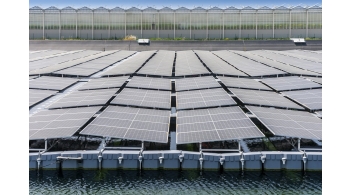
Innovative Technology for Greenhouses: Solar Panels with Rainwater Harvesting Systems
In modern greenhouse farming, the demand for sustainable energy and effective water resource management is growing. The response to this challenge comes in the form of the latest solutions: photovoltaic systems that not only generate electricity but also collect rainwater. European companies are actively implementing floating and ground-mounted solar power systems that integrate rainwater collection functions. These systems are ideal for agricultural enterprises, particularly greenhouse complexes, where energy efficiency and water supply are of key importance.
Results show that photovoltaic panels effectively protect collected water from evaporation. In recent years, the demand for such solutions in the agricultural sector has grown significantly, and more and more greenhouse farms are choosing models with a dual function: energy + water.
For the greenhouse business, this means:
-
Reduced electricity costs
-
Partial autonomy of the greenhouse complex
-
Use of rainwater for irrigation, reducing the consumption of tap water
-
Increased environmental sustainability of the enterprise
At Perspekta, we believe the future of greenhouses lies in innovative solutions that simultaneously meet economic, environmental, and technological challenges.
Source: HortiDaily

Norwegian experience: a greenhouse as a new level of business space and function
Global practice clearly shows that a greenhouse can be much more than an agricultural structure. It can become a fully-fledged architectural object that combines aesthetics, efficiency, and innovative business models.
The Flor & Fjære project in Norway is a perfect example. Located on the island of Sør-Hidle, near Stavanger, a 4,000 m² greenhouse complex has been implemented as a key element in transforming a private garden into a powerful tourist destination.
This greenhouse is not just an engineering structure — it is seamlessly integrated into the landscape as a natural extension of the garden. It houses a restaurant, serves as an event venue, and operates a closed-loop system for growing flowers, herbs, and vegetables for internal use. The design includes a rainwater collection system, energy independence through 1,000 m² of solar panels, and a complete shift from external logistics to local production.
Particular attention was paid to the greenhouse’s placement: it minimally interferes with the terrain, preserves spatial harmony, and sets a new standard for functional space.
Who Might Benefit from This Case?
- Entrepreneurs — as an example of how to diversify greenhouse business into gastronomy, events, and domestic tourism.
-
Architects and landscape designers — as a case of integrating a modern structure into a natural environment.
-
Developers — as a model for long-term investment value through multifunctionality and energy efficiency.
The Flor & Fjære project proves that a greenhouse can be a space for living, growth, and impressions. In the long term, this is a format capable of developing both agricultural infrastructure and entirely new land-use scenarios.
At Perspekta, we study and implement the best global practices in greenhouse construction in Ukraine and beyond. We believe that the synergy of technology, design, and functionality is key to creating spaces that deliver results today and shape environments for the future. If you have an idea — we are ready to help you bring it to life.

Facts of 2024 That Open New Horizons
The year 2024 was eventful for Ukraine's greenhouse sector, and among the most significant highlights, we note:
- The legalization of medical cannabis cultivation has created unique opportunities for investors and businesses. According to preliminary calculations, the payback period for such projects will be only 2 years, considering global prices for dry medical cannabis.
- 157 million UAH was allocated in 2024 to support greenhouse farming, financing 34 enterprises. This demonstrates the government's recognition of the importance of this sector. We are confident that Ukraine's greenhouse market has immense potential for future growth.
It should be noted that, due to military actions and the occupation of certain territories, the greenhouse business has shifted from the southern regions to the central and western parts of Ukraine. This has led producers to adapt to new conditions and find alternative solutions to continue their operations.
At the same time, the growing consumer interest in organic and environmentally friendly products has opened new markets for greenhouse enterprises. Investment in pesticide-free technologies and the expansion of the product range, including exotic crops, lays the foundation for long-term success.
The coming year promises to be even brighter and richer in opportunities. We see great potential in government support, the implementation of innovations, and the development of eco-friendly production. Joint efforts to bring new ideas and technologies to life will help Ukraine's greenhouse business become one of the key drivers of economic growth.
We believe that 2025 will be a year of growth, collaboration, and new horizons for the greenhouse sector. There is much work ahead, but with achievements like those in 2024, we are confident that all dreams and plans will become a reality.
For those planning to start a greenhouse business in 2025, we recommend watching the video How Much Does a Professional Turnkey Greenhouse Really Cost in 2025? Watch the video

Where to get money for projects
We often hear about grants and funding for Ukraine's recovery. But who exactly is providing the money, how much, and under what terms? Which programs are actually available?
We’ve gathered information on some funding programs that might be useful:
1. Netherlands Enterprise Agency under the Ukraine Partnership Facility (UPF) has announced a second round of grants with a budget of €32.5 million. This program provides non-repayable financial support for projects that include Dutch companies, with project sizes starting at €500,000. Applications are open from October 30, 2024, to January 30, 2025. Details:
https://english.rvo.nl/subsidies-financing/upf?utm_uid=&utm_content=permissions_2147483648&utm_medium=email
2. EU for Ukraine Initiative – funding for infrastructure and business recovery in Ukraine. The program offers €100 million in technical assistance. More about the program and contacts:
https://www.eib.org/en/press/all/2023-157-eib-approves-eu-for-ukraine-initiative-to-finance-ukraine-recovery-and-reconstruction-and-backs-transport-energy-and-business-investment-around-the-world?lang=uk
3. Ukraine Investment Framework (UIF) – a €50 billion EU support program over four years. UIF will support key sectors identified in the Ukraine Facility plan, such as energy, agriculture, logistics, critical materials, digital transformation, and green transition. Multiple sub-programs are expected within UIF. In October 2024, the European Commission launched the first call for proposals under UIF, focused on mobilizing investments for Ukraine’s recovery, reconstruction, and modernization.
https://neighbourhood-enlargement.ec.europa.eu/european-neighbourhood-policy/countries-region/ukraine/ukraine-facility_en?prefLang=uk
4. World Bank RISE Program under UIF – $593 million to support private sector development in Ukraine. More about the program and contacts:
https://www.worldbank.org/uk/news/press-release/2024/10/31/ukraines-business-environment-to-improve-with-world-bank-support
5. $2.1 billion in concessional loans from South Korea – funding from the Economic Development Cooperation Fund (EDCF) will be allocated over the next five years for equipment procurement and recovery projects in Ukraine. Although the funding is not yet available, the program will launch soon, with the first stage of financing starting in 2025 for infrastructure loans. Program details:
https://me.gov.ua/News/Detail?lang=uk-UA&id=557f2f01-ff12-4bab-b0a1-1ed6df0f7b65&title=PilgoviKrediti&fbclid=IwAR1KugPmzgw9yXXOUlL2AWIJKWsGMENipIbGdTJmSq_UJUbXZM6fndd4m7c&mibextid=xfxF2i
6. Government Program “Affordable Loans 5-7-9%” – This program remains active. Download details here:
Affordable Loans Program](https://bdf.gov.ua/programs/dostupni-kredyty-5-7-9/
7. Greenhouse Grant Program – still available, providing grants of up to 7 million UAH for greenhouse development.
https://diia.gov.ua/services/grant-na-teplicyu
P.S.: If you’re interested in developing a business plan or modern greenhouse project, feel free to submit a request https://perspekta.ua/uk/service.
Good luck with your projects!

If you can grow tomatoes, you can definitely grow medical cannabis
Today, the medical cannabis market is becoming one of the most promising sectors for agricultural enterprises in Ukraine. With growing attention to the medical benefits of cannabis and its significant profitability, many businesses working with traditional agricultural crops may consider expanding their range.
Medical cannabis is not just a plant; it's a highly profitable crop with a unique regulatory environment. If your business successfully grows tomatoes or other vegetables in greenhouses, you can easily adjust your production processes to grow cannabis.
The key to successful cannabis cultivation lies in optimizing three crucial factors: air, water, and light. Controlling these elements allows for increased yields and higher concentrations of valuable cannabinoids, making cannabis especially attractive to the medical market.
It is important to note that the cultivation process of medical cannabis requires strict control over growing conditions, particularly in separating male and female plants. This aspect plays a critical role in producing plants with high levels of terpenes and cannabinoids, as the primary value of medical cannabis is concentrated in the trichomes of female plants.
Ukrainian businesses have a unique opportunity to capitalize on this new trend in agro-industry and secure their place in the international market. As experience shows, modern greenhouse technologies and proper climate management can be the foundation for successful cannabis production.
Stay tuned for tactical advice on organizing a cannabis cultivation business soon. In the meantime, don’t miss the chance to expand your business and enter the medical cannabis market—a crop that has already caught the attention of the world’s leading investors!
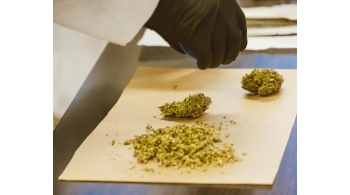
Ukraine Legalizes Medical Cannabis: New Opportunities for Farmers and Investors
Big news from Ukraine! The government has passed a law that legalizes the cultivation of medical cannabis. This is a game-changer for both the medical industry and the business world. Not only will it help improve healthcare for millions of patients, but it also opens up exciting opportunities for farmers and investors looking to tap into a growing market.
Medical cannabis can now be grown in controlled environments like greenhouses, making this a perfect time to invest in high-tech farming. With strict security measures in place, such as 24/7 video monitoring, this business promises to be safe and transparent.
For investors, it’s a chance to get in on a booming global market. For farmers, it means the potential for new income from modern greenhouses. Ukraine is now part of a global trend, joining countries like Canada, the EU, and the USA in embracing medical cannabis.
Perspekta is here to help you build the greenhouses of the future!
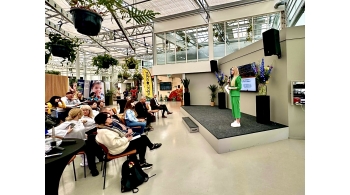
Exciting networking for the future of Ukraine with Perspekta-Ukraine in the Netherlands
We are thrilled to share that Perspekta Group LLC recently participated in a significant business mission, focusing on the future of Ukraine's agro-industrial sector. Our Network Manager, Iryna Fowler represented our company, exchanging valuable contacts and gaining insights into Ukraine's ambitious development plans.
This mission provided us with an exceptional opportunity to connect with key stakeholders and deepen our understanding of the innovative strides Ukraine is making in agriculture and industry. We are excited about the potential collaborations that emerged from this event and look forward to contributing to sustainable agricultural practices and economic growth in the region.
Stay tuned for more updates. We continue to expand our partnerships and enhance our presence in the agro-industrial sector and building mow and better greenhouse projects in Ukraine!
And if you're interested in building a greenhouse project, or investing in existing projects in Ukraine, please contact us!
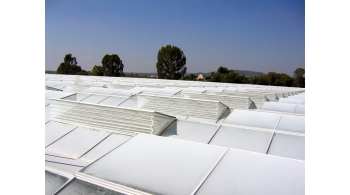
Guide for selecting the best insect netting for your greenhouse
Greenhouse netting has emerged as a vital technology in agriculture, offering both crop protection and a step towards sustainable farming. It serves as a barrier against pests, reducing the need for chemical pesticides and fostering a healthier environment. With its ability to last up to 15 years, netting is a cost-effective and eco-friendly investment for growers. Here are 8 practical tips for selecting the most suitable insect netting for your greenhouse:
1. Identify Your Cultivation Needs: Understand the specific requirements of your crops to match with the right netting solution. A knowledgeable supplier can guide you and arrange visits to see successful implementations.
2. Target Specific Pests: Knowing the pests you need to guard against helps in choosing the netting with the appropriate mesh size for effective protection.
3. Assess Ventilation Requirements: Select a netting solution that accommodates your greenhouse's ventilation needs without compromising climate control. Tools are available to calculate the impact of netting on ventilation.
4. Consider Light Penetration: Different netting systems impact light entry variably. Opt for a solution that aligns with the acceptable level of light reduction for your crops.
5. Evaluate the Investment: Determine a feasible payback period. Consider the netting's lifespan and UV stability in your cost-benefit analysis.
6. Installation Feasibility: Installation methods vary, especially in existing greenhouses. Choose a netting system that can be installed safely and conveniently, with minimal disruption to your crops.
7. Maintenance Demands: Understand the maintenance requirements of your chosen netting system. Opt for dirt-repellent options if possible to reduce upkeep.
8. Financing Options: Explore financing solutions that suit your budget, including the possibility of matching operational cost savings with a fixed monthly payment for the netting system.
By carefully evaluating these factors, you can ensure your investment in greenhouse netting meets your agricultural needs, supports biodiversity, and contributes to more sustainable food production.
Source: Holland Gaas
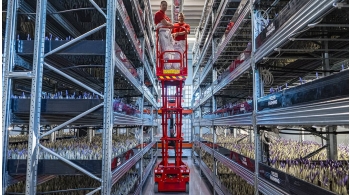
Saffron: The Emerging Treasure of Greenhouse Farming
Saffron, a precious spice with a rich history and unparalleled flavor, represents a unique and promising opportunity for the development of greenhouse farming. Extracted from the flowers of the Crocus Sativus, saffron is not only a culinary delight but also a symbol of luxury that has withstood the ages. Its journey from ancient botanical texts to modern kitchens and scientific laboratories underscores its evergreen appeal and increasing significance.
Saffron: The Path to Success in Greenhouse Business
The history of saffron begins in ancient times, and today it remains one of the most valuable spices. Iran leads in global production, but the high cost of the spice, reaching about $5 per gram in the USA, makes it a profitable choice for greenhouse farmers around the world. Modern research confirms the potential of saffron in the health and wellness sector, further increasing its demand.
Innovations in Greenhouse Cultivation
Greenhouse cultivation, employing advanced technologies such as hydroponics and LED lighting, creates ideal conditions for the cultivation of saffron. This method not only ensures high quality and stability of the harvest but also allows for several harvests a year, increasing profitability.
Economic and Environmental Benefits
The reduction in land use and the possibility of frequent harvesting make greenhouse cultivation of saffron a profitable and sustainable direction. This is a great opportunity for farmers to carve out their niche in the market with a product that enjoys constant demand and growing popularity.
The Future of Saffron in Greenhouses
The future looks bright for those engaged in the cultivation of saffron in greenhouses. This method allows overcoming key difficulties, such as climate sensitivity and labor-intensive processes, making the cultivation of saffron more accessible and sustainable. As the industry grows, new horizons for innovation and profitability open up, making the cultivation of saffron in greenhouses an attractive and profitable direction.
Have questions? Contact us, we will help!
Sourse iGrow News
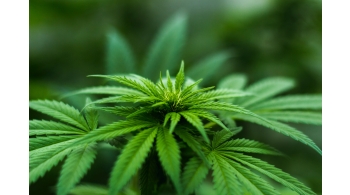
The cultivation of medical cannabis has been legalized in Ukraine
On December 21, 2023, the Ukrainian Verkhovna Rada enacted a landmark legislation that legalizes the use of medicinal cannabis. This pivotal decision not only heralds a new era in Ukraine's healthcare but also represents a substantial advancement for the greenhouse industry, especially in light of the stringent cultivation and oversight requirements involved.
The legislation strictly regulates that cannabis usage is confined to medical, scientific, and industrial applications, with recreational consumption remaining unlawful. Importantly, the cultivation of cannabis is restricted to legal entities holding the requisite licenses and certificates, and each cannabis plant will undergo individual tagging to facilitate tracking.
This move opens up novel opportunities and poses challenges for greenhouse producers. There is an escalating demand for technologically advanced greenhouses, equipped for continuous surveillance and adhering to GMP (Good Manufacturing Practice) standards, presenting a substantial market for firms specializing in constructing and servicing such advanced greenhouses.
Following the law's enactment, an increased demand is anticipated for state-of-the-art greenhouses and related equipment necessary for the quality control and cultivation of medical cannabis. This not only fortifies the healthcare sector but also paves the way for vast opportunities in the industrial cultivation of cannabis, which is poised to significantly benefit greenhouse suppliers and associated technological sectors. Given the global trends and the emergence of this new market, there are strong indicators pointing towards a boom in the cultivation of medical cannabis in Ukraine.
The law is set to take effect in 6 months, providing a crucial window for preparation and adaptation to the new standards. This period is vital for all involved parties to gear up for impending shifts and seize the emerging opportunities in this progressive domain.
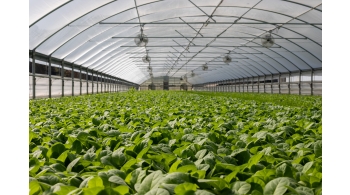
10 tips for success in the greenhouse business
Today, greenhouse cultivation is at the forefront of attention, especially in light of the grant support program for greenhouse construction. The pronounced interest in this field speaks of its importance and potential for the development of the agro-industrial sector at a commercial level. Given these current trends, we offer to consider the key aspects and tips that will help greenhouse growers achieve success in their efforts. 10 tips for successful greenhouse cultivation:
Choose the right growing substrate:
Selecting the appropriate substrate is key for successful cultivation. Factors such as water retention, aeration, and nutrient availability need to be considered. Research and consult with experts to determine the ideal substrate for your specific crops.
Optimize your watering system:
Effective watering is crucial for healthy plant growth and water conservation. Implement precise watering methods, such as drip or micro-irrigation, to ensure accurate watering while minimizing losses. Regularly monitor moisture levels to avoid over-watering or under-watering.
Pay attention to crop protection:
Protecting your crops from pests, diseases, and environmental stresses is vital for maintaining productivity. Develop integrated pest management strategies focusing on prevention, biological control methods, and targeted chemical treatments. Regular monitoring will help identify potential threats at early stages.
Implement environmental control:
Maintaining optimal conditions in your cultivation complex enhances crop growth and yield. Invest in advanced technologies for temperature, humidity, and ventilation control. Automated systems can efficiently regulate these factors, providing a stable and conducive environment for your plants.
Choose the path of sustainable development:
Sustainability is becoming an increasingly relevant issue in the greenhouse industry. Opt for environmentally friendly methods such as water recycling, energy-efficient lighting, and organic fertilizers. Minimize waste production and explore renewable energy options to reduce your ecological footprint.
Rely on accurate data when making decisions:
Use technology and data analytics for informed decision-making. Track and record key parameters like temperature, humidity, and light intensity. Analyze the gathered data to identify patterns and optimize crop management strategies, enhancing efficiency and yield.
Invest in Quality Equipment:
Utilizing reliable and efficient equipment is key to maximizing productivity. Invest in high-quality machinery such as greenhouse structures, lighting systems, and climate control devices. Quality equipment ensures better plant productivity, reduces downtimes, and enhances overall profitability.
Maintain the Professionalism of Your Team:
Cultivate a skilled workforce that understands the intricacies of horticulture and can adapt to new technologies. Provide opportunities for training and education to enhance their knowledge. Encourage your team towards innovation and process optimization, leading to increased productivity and quality.
Enhance Plant Nutrition:
Provide your plants with a balanced and tailored nutrition program. Regularly conduct soil and tissue analysis to determine nutrient deficiencies or excesses. Adjust fertilizer programs accordingly to optimize plant health and maximize yield.
Stay Informed and Network:
Keep abreast of the latest trends, research, and innovations in the horticultural industry. Attend exhibitions, conferences, and webinars to expand your knowledge and connect with industry experts. Building relationships and timely information consumption will help you always stay a step ahead and adapt to new advancements.
Have questions? Our team is here to help!
Source: hortidaily.com
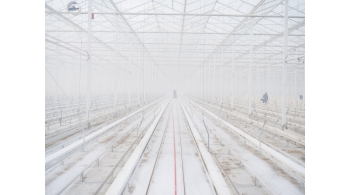
The Five-Step Guide to Achieving 100% Greenhouse Cleanliness and Disinfection
Ensuring the cleanliness and disinfection of your greenhouse is of utmost importance. Achieving 100% cleanliness is crucial because anything less, like 99%, can leave dormant pathogens that might resurface and infect your next crop.
1. Effective Cleaning Before Disinfection
Remember, disinfection without thorough cleaning makes no sense. Disinfectants typically work on the surfaces they touch and may not penetrate deeper layers. This means that while the surface may appear disinfected, pathogens may still lurk beneath the pollution. For gutter cleaning, avoid using just water; remove contaminants.
2. Select the Right Disinfectant
Identify the specific pathogen you're dealing with and choose a product with the appropriate properties. If your goal is to eliminate viruses, ensure you select a product designed for that purpose with the right dosage and contact time. Opt for a versatile disinfectant effective against various pathogens.
3. Search for Hidden Pathogens
Keep in mind that bacteria, fungi, and viruses are tiny. They can hide in seemingly flat surfaces. Even a coated gutter may have hidden spots when viewed under a microscope. Using a product with a good wetting agent is essential to reach these hidden areas.
4. Examine Your Water System
Your water system serves as a highway for infections. Empty greenhouse periods are ideal for inspecting your water system. Check for any biofilm buildup in storage tanks, as clean water addition doesn't guarantee cleanliness. Clean your system without leaving residues, ensuring a clean system throughout the season.
5. Maintain Cleanliness
Once your greenhouse is clean, the real challenge is maintaining that cleanliness. Establish a robust hygiene protocol for the production phase and ensure that your staff is well-informed and actively engaged in maintaining hygiene standards.
The success of your greenhouse depends on a clean and pathogen-free environment. Keep it clean!
Sourse Hortidaily.com
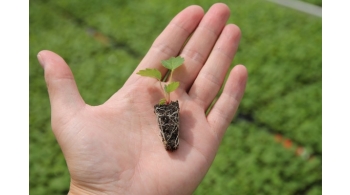
Revolutionizing Strawberry Farming: Introducing Japanese Innovative F1 Seed Varieties for Global Markets
The Miyoshi Group, a renowned Japanese agricultural organization, has introduced two groundbreaking F1 strawberry varieties, marking a significant stride towards exporting Japanese strawberry seeds to global markets. The recently released varieties possess the unique advantage of an accelerated growth cycle, allowing for ripe strawberries as early as June. This innovation stems from the ability to grow the strawberry plants directly from Miyoshi F1 seeds, eliminating the need for mother plant propagation. This streamlined approach not only slashes greenhouse cultivation time but also reduces the overall production process by up to three months. Such a methodology also curtails labor expenses, environmental impact, and production space requirements, aligning well with the growing demand for sustainable agricultural practices.
Noteworthy is the environmental impact reduction, encompassing decreased chemical application, lower heating costs, and minimized fertilizer use, equating to over 40% fewer CO2 emissions and an almost 80% reduction in chemical inputs when contrasted with traditional mother plant-based production methods. The Berry Pop F1 Seed Strawberry Project, characterized by vibrant imagery and a clear Japanese identity, has launched with two inaugural varieties: Berry Pop Sakura and Berry Pop Haruhi, both boasting unique flavor profiles.
Sourse: hortidaily.com
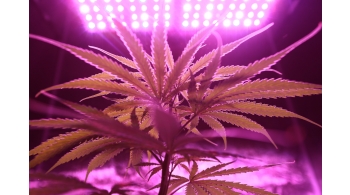
Legalization of medical cannabis in Ukraine: first steps are done
The legalization of medical cannabis in Ukraine has become a long-awaited event for the country's healthcare system. The bill on the legalization of medical cannabis was supported by the Cabinet of Ministers after years of efforts from activists, scientists, and medical professionals. This issue has been surrounded by numerous political manipulations and insufficient awareness. Therefore, it is important to understand why medical hemp is significant and why its legalization is a right step in the development of the medical and scientific spheres.
One of the key aspects of the bill pertains to controlling the content of tetrahydrocannabinol (THC) in cannabis for medical purposes. The project stipulates that permitted preparations with THC content will not exceed 0.2%, as it is in the EU, which will help reduce the risk of addiction. It is crucial to distinguish medical cannabis from illegal drugs and recognize its potential in treating various conditions.
Even with limited evidence on the effectiveness and side effects of medical cannabis, it is necessary to comprehend that research is essential for developing medical drugs based on it. The prohibition of studying the plant by Ukrainian scientists puts our country in an unfavorable position, and legalization opens opportunities for scientific research and the development of new therapeutic methods.
A particular focus should be placed on the possibilities of treating post-traumatic stress disorder (PTSD) with medical cannabis. Some studies indicate that this plant-based preparation can help veterans cope with PTSD symptoms. Ensuring legal access to medical cannabis can be a significant step in providing veterans with proper treatment and support.
Of course, some people are concerned about the potential abuse of legalized cannabis. However, it is essential to understand that controlled and limited access to medications is crucial in reducing negative consequences. The application of medical cannabis should be based on scientific evidence and adhere to strict safety standards.
Before legalizing medical cannabis, careful consideration should be given to its accessibility and regulation. History shows that previous attempts at legalization were not always successful due to improper implementation or insufficient control over the supply.
Nevertheless, the goal of legalizing medical cannabis represents a significant boost in opportunities for medicine and science in Ukraine. Ensuring access to research and medical preparations based on cannabis stimulates the development of medical science and can aid patients with various conditions, including PTSD.
Therefore, we closely follow Ukraine's path towards new therapeutic and business opportunities!